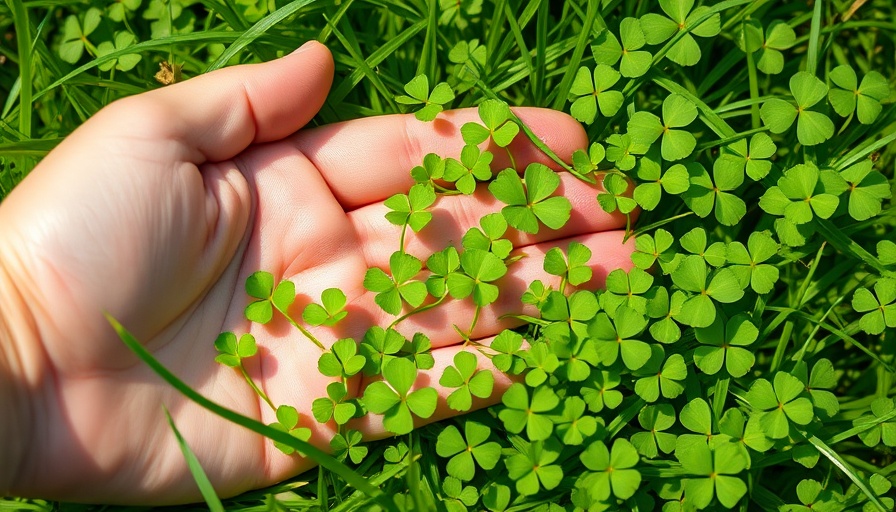
Embracing the Challenge of Shade Gardening
For many homeowners, shade might seem like a barrier to a lush and vibrant lawn. However, those dense areas under trees or beside buildings don't need to result in barren patches of grass. In fact, redesigning these spaces can lead to beautiful, thriving gardens that fit the unique character of your outdoor space.
Transforming Shade into Beauty: Alternative Lawn Solutions
If you're struggling with how to maintain a traditional lawn in shaded areas, it might be time to rethink your approach. Instead of fighting the shade, consider alternatives that not only thrive in lower light but also enhance the aesthetics of your yard.
Why Wildflower Lawns are a Game-Changer
One of the most delightful alternatives is the wildflower lawn—a concept that has gained traction recently due to its low maintenance and environmental benefits. Unlike traditional grass, wildflowers flourish even in partially shaded environments. They require minimal upkeep and provide a vibrant splash of color through various seasons. By incorporating a blend of shade-tolerant flowers, you can create a dynamic landscape that flourishes even when the sunlight is scarce.
Moss: Nature's Green Carpet
If you live in an area conducive to moss growth, consider it an excellent option for shaded lawns. Moss not only offers a unique look with its soft, verdant carpet but also remains resilient against trampling. By strategically placing stones, you can craft paths that encourage moss growth and create an inviting natural landscape.
Choosing the Right Ground Covers
For those looking to introduce ground covers, numerous plants thrive in the shade. Consider varieties like Creeping Jenny, which not only tolerate but can flourish in low-light conditions. Selecting the right plants is crucial; visiting a local nursery can provide you with expert advice tailored to your specific climate and soil conditions.
Benefits of Rethinking Your Lawn
Adopting these alternatives not only enhances your outdoor space but also contributes positively to the environment. Wildflowers attract pollinators, while moss and ground covers help retain moisture in the soil, reducing the need for water. This shift to shade-friendly plants can contribute to sustainable gardening practices, embodying a more eco-conscious lifestyle.
Frequently Asked Questions about Shade Lawn Care
When transitioning from a traditional lawn to one more adaptable to shade, many homeowners have questions. Common inquiries include: “What is the best soil for shade gardening?” and “How can I maintain growth throughout the seasons?” It's essential to start with quality soil; amending it with compost can improve nutrient retention. Furthermore, observing how plants react throughout different seasons will guide maintenance and adjustments.
Creating a Thriving Outdoor Living Space
Ultimately, your goal should be to create a sanctuary within your yard. Incorporating seating areas, water features, and paths through these spaces can transform your garden into a peaceful retreat. A thoughtfully designed outdoor area can enhance your home's tranquility and be a joy for the entire family.
In Conclusion: Take Action for Your Shade Garden
Embrace the shade around your home as an opportunity for creativity instead of a limitation. By deciding to incorporate wildflowers, moss, or hardy ground covers, you can design a dynamic and beautiful garden that thrives under the canopy of trees or the shadow of fences. With the right approach, your shaded areas can become a lush, green escape.
 Add Row
Add Row  Add
Add 




Write A Comment